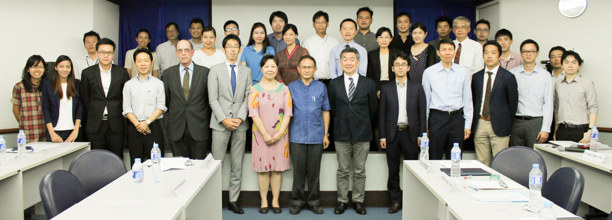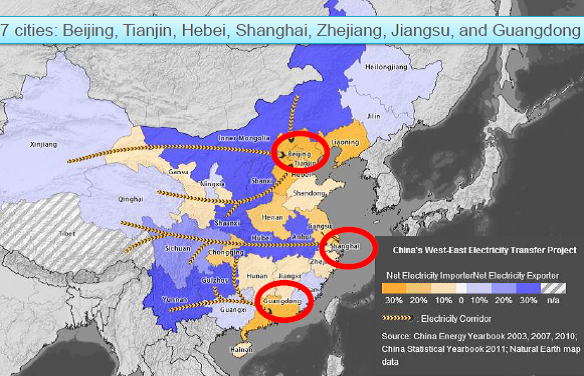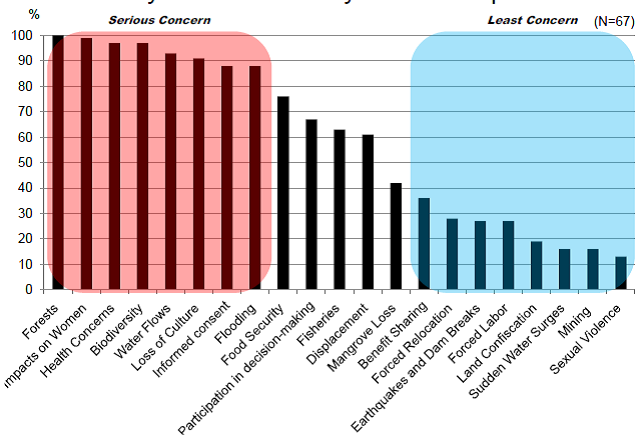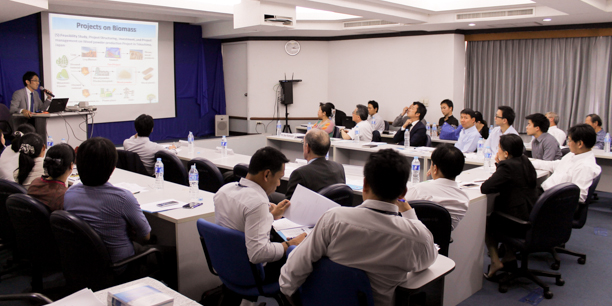The 4th ERI-PARI Joint Workshop Detailed Report
Feb 24, 2015
The 4th PARI-ERI Joint Workshop Flash Report

ASEAN Connectivity: Power Integration between Thailand and Myanmar
| [Date] | Thursday, February 24, 2015, 13:30-17:15 |
|---|---|
| [Venue] | Energy Research Institute (ERI), Chulalongkorn University, Bangkok |
| [Co-hosted by] | Energy Research Institute (ERI), Chulalongkorn University Policy Alternatives Research Institute (PARI), the University of Tokyo |
| [Supported by] | Economic Research Institute for ASEAN and East Asia (ERIA) |
See the Flash Report and Presentation Slides here
Introduction: Social barriers to hydroelectric power
Since the transfer to civilian government in 2011, capital has flowed rapidly into Myanmar from foreign countries; in general, nobody in Myanmar objects to fully using it to achieve economic development and national reconciliation. One bottleneck is the stable supply of electric power. According to the Ministry of Electric Power (MOEP), the electrification rate is approximately 30%, and Myanmar has been ranked almost at the bottom in the Energy Development Index by the International Energy Agency (IEA). What should be done to advance hydroelectric development to provide Myanmar's people with a stable supply of power? Since 2013, Policy Alternatives Research Institute (PARI) of the University of Tokyo and Energy Research Institute (ERI) of Chulalongkorn University have conducted joint research and held numerous workshops together, with stakeholders mainly from Thailand.
Many social barriers critically hinder large-scale hydroelectric power1, a problem made clear by the 3rd PARI-ERI Joint Workshop, held in October 2014. What conditions reduce these impediments, and what methods can be devised through cooperation between interested parties to overcome them? On February 24, 2014, the 4th Joint Workshop, held at ERI in Bangkok, focused on this issue. About 40 people took part in a lively exchange of views, mainly Thai businessmen and government policymakers.
Outline of the workshop
Newly appointed ERI Director Dr. Dawan (ERI) greeted the participants. Then Professor Yoshikawa (PARI) opened the workshop by introducing PARI's projects, implemented under a contract with the Economic Research Institute for ASEAN and East Asia (ERIA), and based on ERI/PARI joint research2. Next, Visiting Researcher Mr. Yamaguchi (ERI) introduced ERI/PARI collaborative research and discussed the aims of the workshops mentioned above. This was followed by the keynote address from Mr. Odera (Eight-Japan Engineering Consultants Inc.) who referred to his company's experience with conducting various barriers for managing environmental and energy projects in developing countries. As, in general, the process for obtaining authorization from administrative bodies is not sufficiently transparent, it is difficult to overcome barriers in carrying out projects.
Next, Assistant Professor Dr. Prasert (ERI) spoke about Chinese perspectives on power development investment along the Salween River. The motive behind China's rapid development of this water source and other areas along its border with Myanmar is the great geopolitical significance of this boundary as a route to the Indian Ocean, where China wishes to establish a future presence. Further, China is eager to exploit the vast hydropower potential of its western region to overcome electric power shortages in the east, which is growing at a remarkable rate. (Please see Figure 1 regarding China's “West-East Electricity Transfer Project”.) For China, the Salween River has become a high priority project that must happen for political and economic reasons3.

Figure 1. China's West-East Electricity Transfer Project Plan
Source: The Wilson Center's China Environment Forum (CEF)
The fieldwork by Keith Rabin (KWR International), who carefully studied each project, reveals that the power development projects are not progressing well. In terms of this point, Visiting Researcher Yamaguchi discussed the case of the Mongton hydropower project, which has a capacity of more than 7,000 MW and has seemingly entered into its initial stage4. Yamaguchi presented the intermediate results of structured interviews with local residents about their fears concerning the dam.
As the figure2 shows, residents' greatest worries are the destruction of the natural environment due to the dam's construction, and the harmful impact it will have on their livelihoods. Inversely, it is noteworthy that they expressed relatively little anxiety about forced labor and compulsory relocation, about which anti-dam groups often voice their views.

Figure 2. Concerns of residents living near the proposed site of the Mongton Dam
Source: A February 2015 field survey
Conclusion: Eradicating fears
It is premature to judge the fears of residents based only on this survey, which was limited to 67 households. A larger-scale study should be conducted in the future. In order to dissipate residents' fears grounded in the research, we need to thoroughly discuss what all interested parties must do so they can agree on how to share their roles among each other. For example, it might be best to also plan corporate social responsibility (CSR) activities for investors through such intense dialogue. It is this deliberation that enables inclusive development, which has recently been pointed out as a key concept for a successful hydroelectric power development (see the presentation slides of Mr. Tanai Potisat).
As a matter of fact, the role of Myanmar's government is the most important part of this course of action, for the government has the final responsibility to help Myanmar's people advance in addition to the roles of investors including Thailand and international donors. For this reason, the final policy proposals at the end of the workshop would ultimately be directed toward Myanmar's government. As Assist. Prof. Sugiyama (PARI) mentioned, PARI has built strong relationships with concerned ministries and agencies by training administrative personnel. In near future over the national election, the role of the National Energy Management Committee (NEMC), which has united the ministries and agencies involved, will become increasingly important5. Ultimately targeting NEMC, our goal is to continue to offer effective perspectives based on scientific knowledge.

Notes
- Regarding the 3rd PARI-ERI Joint Workshop, please see /eng/event/smp141002_rep2.html
- Regarding the research sponsored by ERIA, please refer to Global Energy Policy and East Asia Research Unit at /eng/unit/gepea.html
- In Chinese, the Salween river is called the Nù Jiāng River. Thirteen hydroelectric power dams are planned for the Nù Jiāng River (within China), and 7 for the Salween River (within Myanmar).
- Concerning the Mongton hydropower project, see “China to build dam in Shan state” published September 19, 2014 in the Thai English-language paper The Nation: http://www.nationmultimedia.com/aec/China-to-build-dam-in-Shan-state-30243588.html
- For details about related international symposiums, please see International Symposium "Energy Policy Development in Myanmar" Report at /eng/event/smp150206_rep.html
Related Links
The 4th ERI-PARI Joint Workshop Flash Report
The 3rd PARI-ERI Joint Workshop Detailed Report - ASEAN Connectivity: Power Integration between Thailand and Myanmar
The 3rd PARI-ERI Joint Workshop Flash Report - ASEAN Connectivity: Power Integration between Thailand and Myanmar
The 2nd PARI-ERI Joint Workshop Detailed Report - ASEAN Connectivity: Power Integration between Thailand and Myanmar
The 2nd PARI-ERI Joint Workshop Flash Report - ASEAN Connectivity: Power Integration between Thailand and Myanmar
The 1st PARI-ERI Joint Workshop Report - The Evolving Energy Relationship between Thailand and Myanmar - A View From Thailand -
Global Energy Policy and East Asia Research Unit
Energy Research Institute (Chulalongkorn University)


